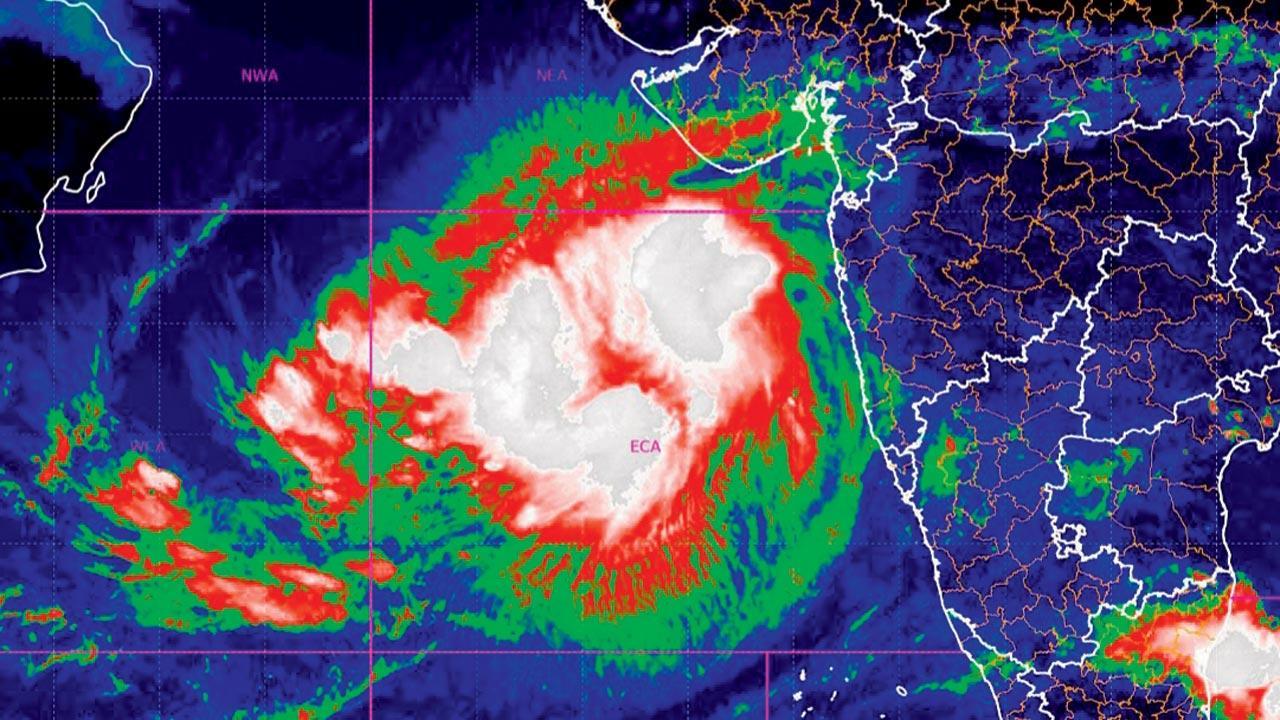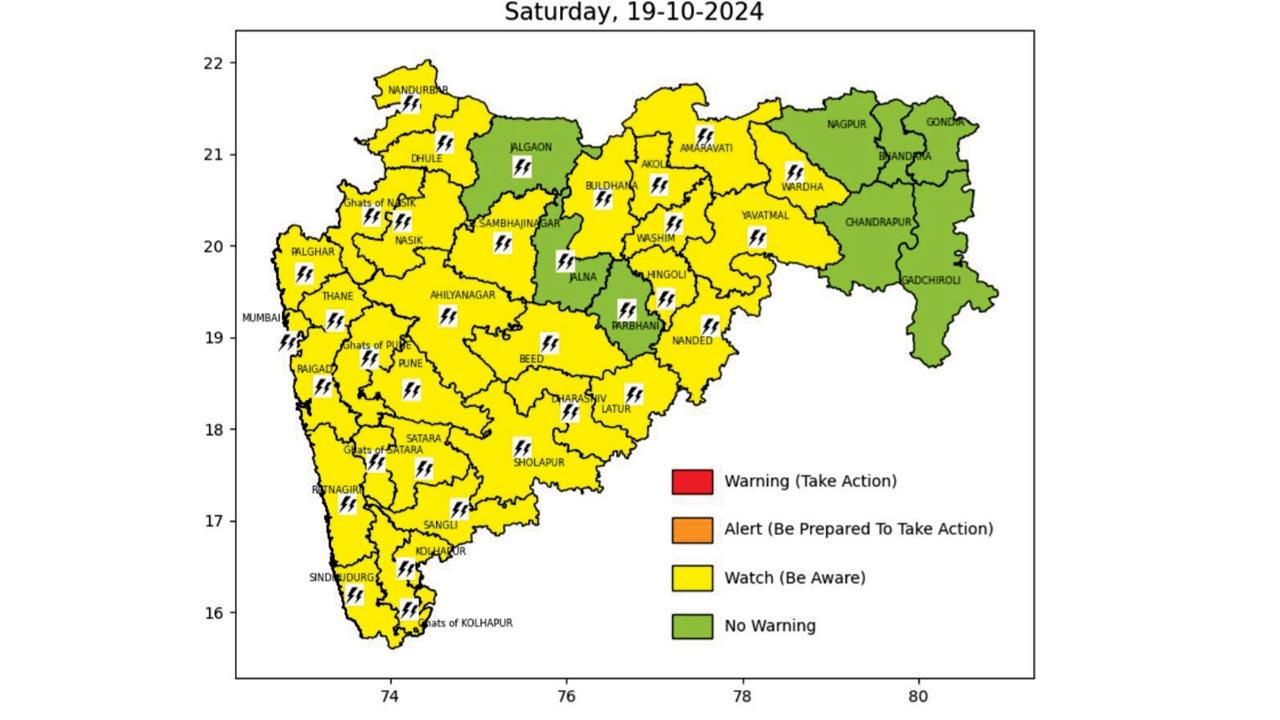IMD issues heavy rain alert for Mumbai, several districts across state

The huge cloud formation over the Arabian Sea
With the weekend arriving, the India Meteorological Department (IMD) and private weather observers have issued forecasts indicating the possibility of rainfall across Mumbai. The IMD has also issued a yellow alert (heavy rainfall), warning residents to be prepared for inclement weather. The official monsoon retreat was announced by the IMD on October 15.
ADVERTISEMENT
A private weather forecaster told mid-day, “A massive cloud formation has been detected in the Arabian Sea, leading to the development of a low-pressure belt that is expected to influence weather patterns in the region. The phenomenon could result in showers, which may start from the wee hours of Saturday and persist throughout the weekend.”
 Region-wise alert issued by IMD on Saturday
Region-wise alert issued by IMD on Saturday
Apart from Mumbai and the surrounding Mumbai Metropolitan Region (MMR), the IMD has also issued a yellow alert for Raigad, Ratnagiri, Sindhudurg, Dhule, Nandurbar, Nashik, Ahilyanagar, Pune Satara, Sangli, Solapur, Chhatrapati Samhbajinagar, Beed, Hingoli, Nanded, Latur, Dharashiv, Wardha, Amravati, Yavatmal, Akola, Buldhana and Washim districts of Maharashtra.
Rushikesh Agre, on his X handle ‘Mumbai Rains’, said, “Making a comeback again! A wet weekend for Mumbai and MMR. Friday night, Saturday and Sunday will again be wet for Mumbai with moderate to high cloud cover. Advisable to carry umbrellas.”
So how do independent weather observers often forecast the weather before IMD issues any alert? A source from IMD said, “Bring a part of a government body, we are answerable to multiple people for issuing any forecast. That is the reason we cannot just issue a forecast like the private observers do. There is a huge amount of study and in-depth analysis required before a forecast is issued. In case a private forecaster issues a forecast and it turns out to be wrong, they will just apologise and carry on without any repercussions other than some trolling on social media.
But if we issue a wrong forecast, it will have severe repercussions for all the government bodies, be it the disaster management bodies of states or district and municipal corporations or other bodies, which depend on our forecast for the dissipation of resources.”
According to the source, private weather forecasters also use the same radar and satellite images that the IMD uses. “In fact, we have much more access to these systems but we will always dissipate a forecast after an in-depth analysis of data rather than a spontaneous forecast.”
The IMD source further asserted that the IMD, unlike private weather forecasters, doesn’t issue a forecast directly to the people. It issues the forecast to government bodies like municipal corporations and district administrations and in turn, these government bodies dissipate the information and any alerts to the general people. “This is another reason why it takes time for the forecast to reach the masses.”
 Subscribe today by clicking the link and stay updated with the latest news!" Click here!
Subscribe today by clicking the link and stay updated with the latest news!" Click here!







